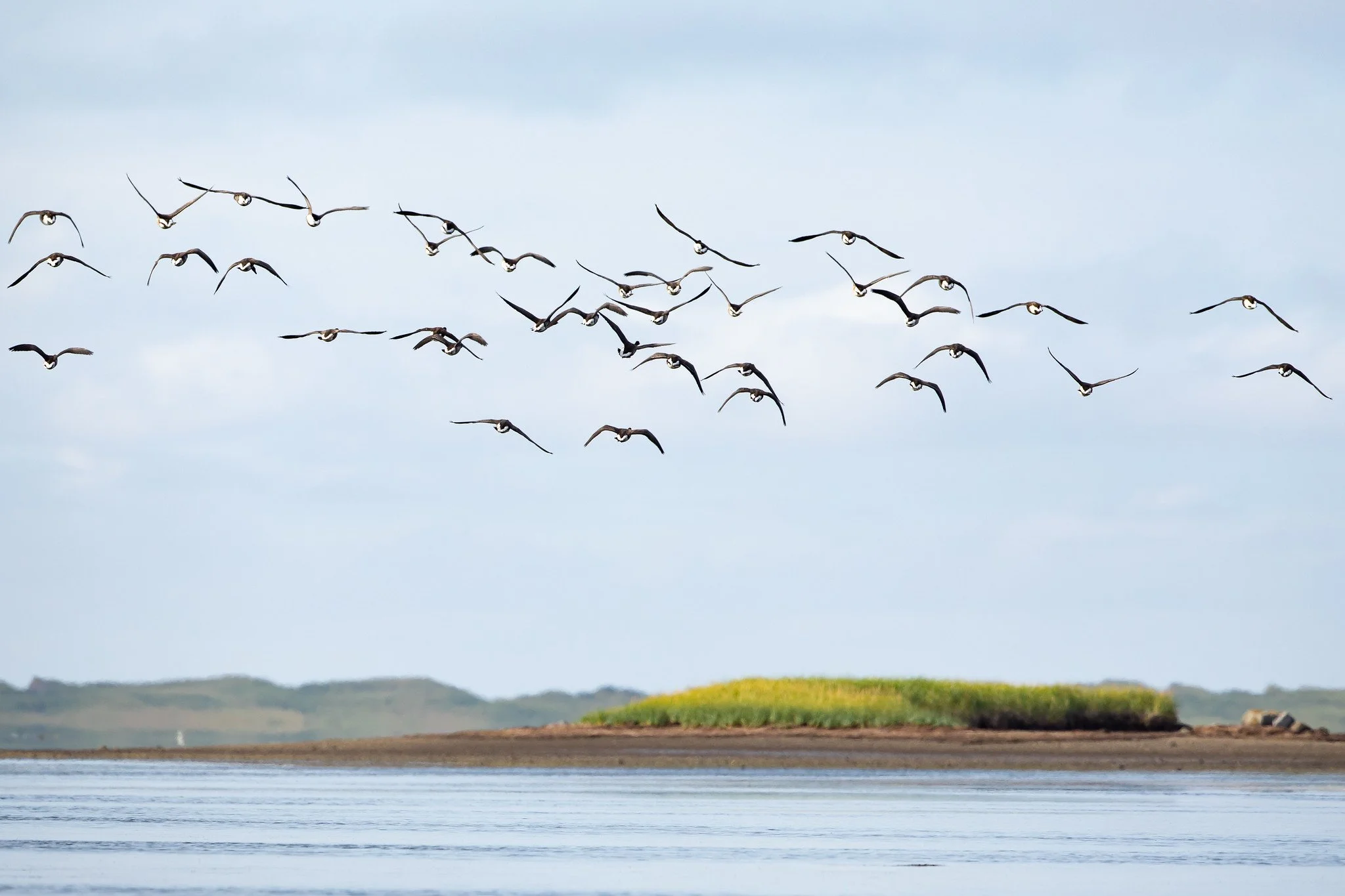Damaging Day for National Wildlife Refuges in Alaska
For Immediate Release October 24, 2025
Contact: Eden Taylor etaylor@refugeassociation.org
Arctic and Izembek Refuges, established on the same day in 1960, now share another day that could see their shared degradation.
Fall foliage glows with color at Last Lake on Arctic National Wildlife Refuge, AK | Sara Wolman/USFWS
WASHINGTON, D.C. – The National Wildlife Refuge Association yesterday opposed the U.S. Department of the Interior’s decision to approve a land exchange that would enable construction of a commercial road through Izembek National Wildlife Refuge and the restoring of leases in the Arctic National Wildlife Refuge that were deemed to have been wrongfully approved.
“These decisions threaten the integrity of two of the most biologically important refuges in the entire Refuge System,” said Desirée Sorenson-Groves, President & CEO of the National Wildlife Refuge Association. ”Today’s actions undermine sixty-five years of conservation precedent and weaken protections for public lands.”
Entire Arctic Refuge Coastal Plain Now Open to Oil and Gas
The Department of the Interior overturned suspended oil and gas leases for the Alaska Industrial Development and Export Authority (AIDEA) and opened the entire 1.5 million acres of the Arctic Refuge’s Coastal Plain to oil and gas leasing and drilling. This endangers one of the last remaining untouched wilderness areas in America. This region is the calving ground of the Porcupine Caribou herd and is essential to a complex Arctic ecosystem that includes threatened polar bears, migratory birds, and other wildlife.
The Gwich’in people, whose ancestral ties to this landscape span generations, have long made clear that drilling in the Arctic Refuge would irreversibly harm their food security, cultural heritage, and way of life. Despite this, there has been no meaningful engagement with the Indigenous communities most directly impacted.
Izembek, a National Precedent with National Consequences
Pacific Black Brant at Izembek National Wildlife Refuge, AK | Lisa Hupp/USFWS
The announcement also finalized a controversial land exchange with the State of Alaska, enabling a commercial-use road to be built through designated wilderness in Izembek National Wildlife Refuge. Izembek NWR provides essential habitat for hundreds of thousands of migratory birds, including nearly the entire global population of Pacific black brant, as well as brown bears, salmon, and other iconic wildlife. The over 300,000-acre refuge contains some of the most intact wetlands and eelgrass beds in the world, supporting biodiversity that stretches far beyond Alaska’s borders.
“As someone who has spent decades advancing conservation for the benefit of people and nature, including through public service and collaborative processes, I am troubled by this decision,” said The Honorable Lynn Scarlett, Board Chair of the National Wildlife Refuge Association and former Deputy Secretary of the Department of the Interior. “Izembek and Arctic Refuges are globally important ecosystems and are part of the promise we’ve made as a nation to protect extraordinary places for the benefit of all. Weakening that promise risks more than two refuges; it risks the foundation of how we care for our public lands.”
By advancing a road through designated wilderness, the decision threatens to erode the legal protections established by the Wilderness Act and the National Wildlife Refuge System Administration Act. Both laws were enacted by Congress to safeguard irreplaceable public lands from development and ensure they are managed in perpetuity for conservation.
The Arctic and Izembek National Wildlife Refuges were both established on December 6, 1960. Today, they stand together again—this time as examples of what is at risk when conservation commitments are cast aside.
What’s at stake is far greater than one road through one refuge or drilling in one refuge. This decision signals that no place in the National Wildlife Refuge System is truly safe from future development, even when they have the highest level of protection.
###
As the only nonprofit solely dedicated to advocating on behalf of the National Wildlife Refuge System, the National Wildlife Refuge Association protects, promotes, and enhances America’s wildlife heritage through strategic programs that serve the System and wildlife beyond its boundaries. The organization addresses Refuge System funding, management, and strategic growth, while also promoting programs that maximize the system’s conservation impact.
Arctic and Izembek National Wildlife Refuges were established on the same day, December 6, 1960, by President Dwight Eisenhower. The Arctic Refuge protects 19.6 million acres of intact arctic ecosystems, including the 1.5 million-acre Coastal Plain, a vital caving ground for the Porcupine Caribou Herd and a landscape sacred to the Gwich’in people. The Izembek Refuge spans more than 315,000 acres on the Alaska Peninsula. The refuge’s wetlands, lagoons, and tundra provide globally important habitat for migratory birds and marine species and support subsistence traditions and food security for local communities.
In 1980, Congress designated over 300,000 acres within both refuges as wilderness—the highest level of land protection in the United States. These designations reflect the national commitment to safeguard the ecological integrity of these landscapes in perpetuity.


